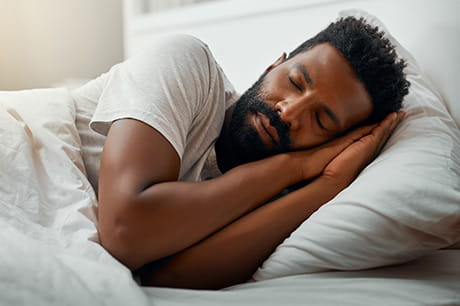Whether you’re waiting to be tested for COVID-19, you’re waiting for your test results or you’ve tested positive, separating yourself from others is the key to protecting everyone around you.
If you\’re already sick, staying home is meant to keep you apart from anyone who isn\’t infected. This applies whether you have tested positive for COVID-19 or if you have symptoms but haven’t been tested yet.
To help protect your health, and the health of everyone around you, you should stay home when:
- You are sick but haven’t been tested
- Are awaiting your test results
- Have tested positive for COVID-19
Do I need to get tested for COVID-19?
Most people won’t need to be tested for COVID-19 unless they have symptoms of respiratory illness. Symptoms range can appear as early as two days and as late as 14 days after exposure and can range from mild to severe.
This is because, outside of health-related risk factors, the Centers for Disease Control and Prevention (CDC) has updated the list of COVID-19 symptoms, which now includes:
- Cough
- Shortness of breath or difficulty breathing
- Fever
- Chills
- Repeated shaking with chills
- New loss of taste or smell
- Headache
- Sore throat
- Muscle pain
It’s important to note this isn’t a complete list, but rather a set of symptoms that are most commonly associated with the illness. These symptoms can also be linked to other illnesses, so if you’re experiencing them, it doesn’t necessarily mean you have COVID-19.
If you have any symptoms that concern you, the best thing to do is call your primary care provider for medical advice.
Whether you\’ve been tested or not, here\’s what to do if you\’re sick
If you aren’t feeling well, the only time you should leave your home is to seek medical care. The best thing you can do if you’re sick — with a bad cold, the flu or COVID-19 — is stay home and self-isolate.
Here’s how to do that:
- Quarantine yourself at home. Stay in a single room away from others. Use a separate bedroom and bathroom, if available.
- Don’t share personal household items. Use your own set of dishes, utensils, towels, bedding and other household items. Wash them thoroughly after use.
- Clean all “high-touch” surfaces in your home daily, including counters, tables, doorknobs, bathroom fixtures, phones, keyboards and tablets.
- Clean your hands thoroughly and frequently. Wash your hands with soap and water for at least 20 seconds or use an alcohol-based hand sanitizer that contains 60% to 95% alcohol, covering all surfaces of your hands and rubbing them together until they feel dry. Use soap and water if your hands are visibly dirty.
- Avoid touching your face with unwashed hands.
- Cover your mouth and nose with a tissue or your bent elbow when you cough or sneeze. Throw used tissues into a lined trash can, then wash your hands right away.
- Tell anyone else who you’ve been in contact with you may have contracted COVID-19. They should also follow the recommendations above and monitor their health for any signs of respiratory illness (fever, cough, shortness of breath).
Note: Self-isolation is different than self-quarantine (which means you are staying at home and practicing physical distancing from your household members).
Monitor your symptoms
Most people who have COVID-19 will experience mild symptoms, which can be managed at home. For most people, symptoms will lessen over time with self-care. Learn more about recovering from COVID-19 at home.
Call your primary care doctor or our 24/7 COVID-19 hotline at 570-284-3657 if:
- You’re experiencing cough, shortness of breath or your symptoms are severe or worsening.
- You think you may have been exposed to COVID-19 and are experiencing any combination of the symptoms listed above.
They can give you guidance on whether you should be tested and what to do next. It may also be a good idea to call your primary care doctor to let them know you’re sick, even if you don’t think it’s COVID-19.
The CDC also outlines what to do if you have possible or confirmed COVID-19
Head to the nearest hospital ER if your symptoms are severe, worsen or if you have difficulty breathing.
Emergency symptoms of COVID-19 include:
- Difficulty breathing or shortness of breath
- Persistent pain or pressure in the chest
- Bluish lips or skin
- Sudden confusion or inability to awaken
Next steps:
Visit our Coronavirus Resource Center
Learn about telemedicine (virtual video visits)


